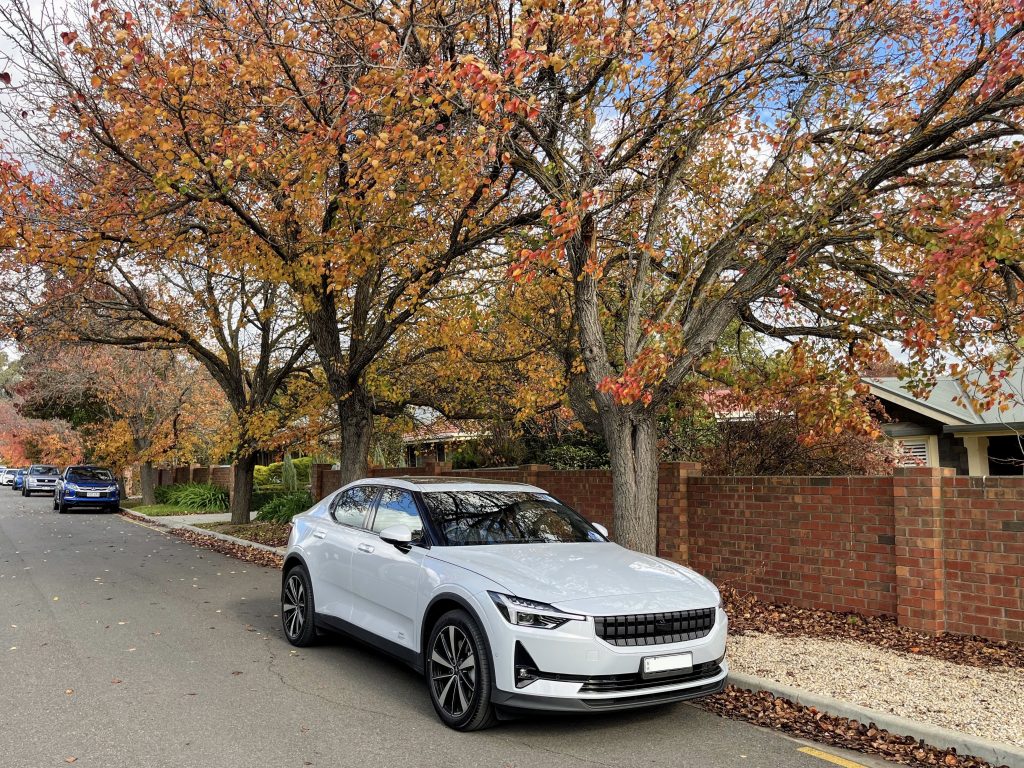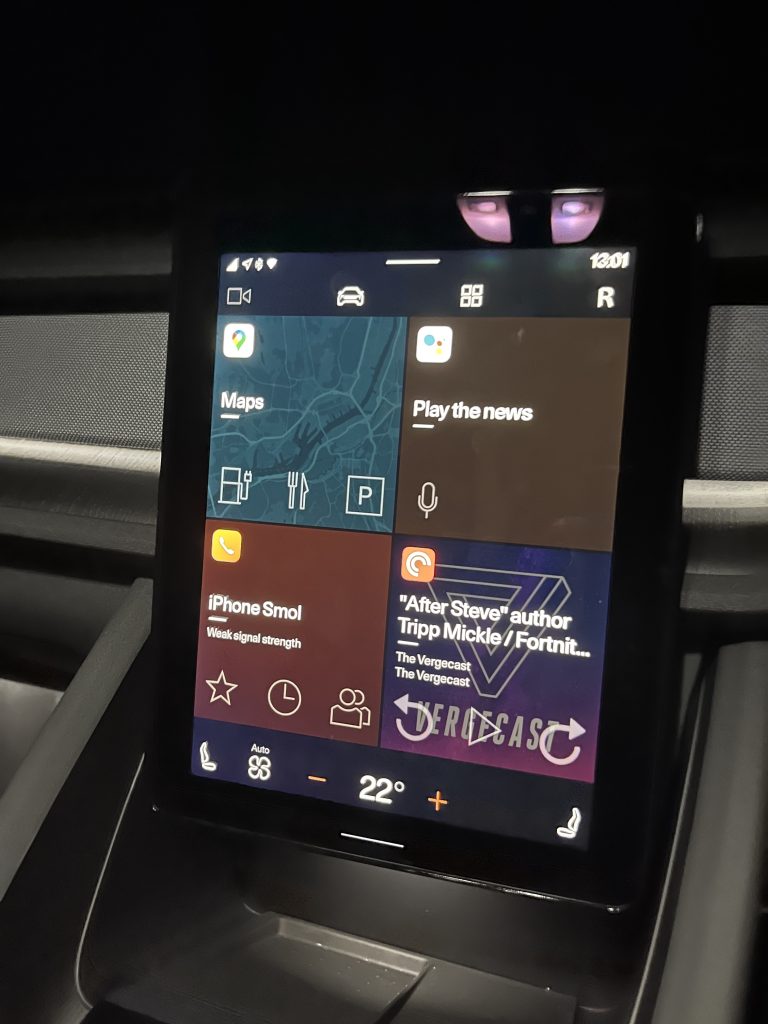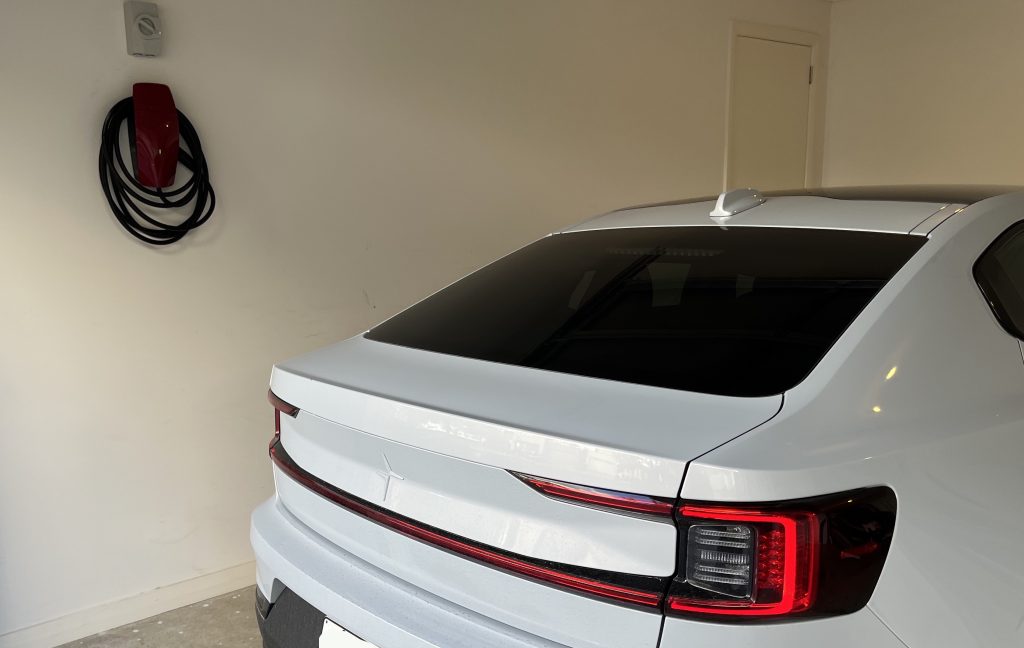Before I start this post, Rusty Junior would like to point out that he grew up in a housing trust house, on school card, barely able to afford shoes from Kmart and regular meals. It’s not relevant to you, per se, but he feels this is required to alleviate the Weird Guilt™ inherent in writing a post like this. Thanks for your time. As you were.
A few weeks ago our family went all electric. My wife sold her 2018 VW Tiguan (for almost what we paid for it, the used car market in Australia is nuts at the moment!) and took delivery of a Polestar 2, long range, single motor in Magnesium. Having had electric cars for 4+ years now, we knew there’d be no issues with road trips or charging or anything most people ask or worry about, not to mention that we were both excited to never go to a petrol station again. As mentioned in my other posts, the solar and battery system at my house can also charge these cars for free quite easily for about 9 months of the year. For the other 3 (which we are currently in) my wife gets free charging at her work, where they have a GIANT solar installation. So it’s renewable, guilt free…and also, well, free!

There are of course a million reviews out there for the Polestar 2. Zeus knows we watched a lot of them before buying one! But I’m not a car reviewer and don’t want to bore you trying to become one, so here’s some quick observations:
The delivery process in Adelaide was very smooth. The delivery person turned up at the agreed time to our place, and shortly after a truck arrived with the car on it. Sunny, our delivery person, was super friendly and very eager to show us all the bits of the car. So eager in fact that we just let him do his thing, it was a joy to behold.
Compared to my model 3, some things instantly stood out to me. To my eye, the Polestar 2 is just a nicer looking car inside and out. I prefer the lines, I prefer the more “car type” cabin. It also feels better built in a way that’s hard to describe. More solid. Tighter tolerances. Just…well…better. It does however feel a bit more cramped because all those screens, consoles and padded areas cut down on the overall visibility. The centre console for example feels quite high and imposing. I guess it’s a design feature, but it could have been a bit lower and more subdued. Driving the model 3 feels like you’re in a fish tank. Driving the Polestar feels like…well..driving a car. I’d say overall the model 3 is nicer to sit in and admire, while the Polestar is more practical day to day to actually drive and be a passenger in.
Driving wise, both are very planted to the road thanks to their heavy battery packs. I don’t really have a preference except to say they are both a joy to drive. I’m also not a car reviewer, so for this bit I’m quite happy to offload you to YouTube for their opinions. That said if you have the means (money, a place to charge it, etc) and haven’t gone electric yet…well…you really should! There are a lot more options than there were a few years ago, and for this segment of the market the model 3 and Polestar 2 are my favourites.
Android Automotive (the infotainment system the Polestar runs) is functionally a bit better than Tesla’s system. It’s a bit uglier, but overall you can do more of what you need to get done as well as install third party apps like Pocket Casts, PlugShare and of course, Spotify. Having the ability to install apps from the Google Play store, straight into your car is very handy. The voice assistant is amazing. It can actually understand me properly, and lets you dictate text messages, navigate and change car settings with ease. The addition of a screen in the driver console section is nice as well. It shows you routing info while navigating, and also important things like speed, etc. It’s not a big deal to glance over to my left in the model 3 to see that, but it’s nicer to not have to. Why Google (or Polestar) went with the thin icon style design they did though…is a bit beyond me. I don’t love that look, but functionality wise it’s stellar.

Charging wise the Polestar 2 has the same Type 2 plug almost all cars in Australia have now. With the top bit for AC charging, and a set of DC pins for fast charging. One small pain point: you can charge a Polestar 2 from a gen 3 Tesla wall charger. Some early gen 2 ones also have an internal switch you can flick to do the same. But as you can guess, I had the gen 2 model which they made for about a year that is unable to charge anything that isn’t a Tesla. It has the internal switch, but by all accounts it’s non functional. So I had to pony up for a newer charger. On the plus side the cable is far thinner now and I also got to move it to a more convenient spot where we can charge both cars in the garage.

Finally, let’s talk road trips. If you’re new to electric cars my advice here is to take the “WLTP” number quoted on the car makers site, and shave off 20% for city driving, and 30% for highway (100km/h+ speeds). This will vary a bit based on how hard you drive, but it’s a good conservative figure to give you an idea of “real world” range. So the model 3 long range claims 600kms, in reality you’re going to get 480kms around the city and 420kms at highway speeds. Similarly the Polestar 2 claims 540kms which means 430kms city, 380kms highway. What that means in practice is that there’s more than enough range for almost anyone. Sure you can’t drive 8 hours non stop, but I’m not entirely sure you should ever do that for safety and comfort reasons. Drive for 2-3 hours, take a break, fast charge for 20 minutes, and keep going.
The elephant in the Australian room is that (at the time of writing this post) Tesla’s Supercharging network is much more reliable than other third party systems. That’s changing fast, and Tesla might even open their network up to other cars soon, but for the next year or two this will likely still be a fairly big factor in Tesla’s favour Down Under. We still plan to road trip in the Polestar 2 (1200km+ trips) but it will require slightly more planning and slightly more vigilance before we leave to make sure all the stations are operational and we pick the correct route. Thankfully the early adopter portion of EV ownership, like planning wineries to stop at that have 3 phase power, is a distant memory. We’re in the decent amount of chargers, occasional issues, portion of the adoption curve. I fully expect in 2 years here in Australia those issues will be behind us, so there really has never been a better time to buy an EV…if you can find one shipping here this year. That lack of availability and the price of EVs are two massive issues here in 2022, but that’s a whole other blog post.